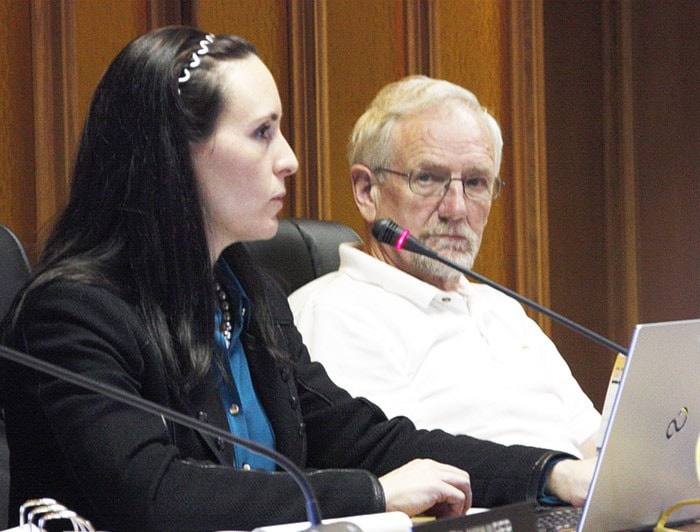The City of Prince Rupert’s chief financial officer Corinne Bomben presented a report on preliminary estimates for the 2015 budget, a report that showed council will once again need to cover a projected shortfall.
When the city’s expected revenues and expenditures are taken into consideration, the city is projecting a $220,000 shortfall in the 2015 budget. Bomben said the anticipated shortfall is caused by expected hikes in energy costs, as well as contractual wage and benefit increases that will cost an additional $400,000 in 2015.
Bomben said another contributing factor to the shortfall is the port property tax rate cap enacted by the provincial government. Because of the legislation, the city can only charge major industrial property owners certain mill rates on federal port land.
“Part of the reason for the disparity in funding is the fact that everyone else’s assessments have gone up, yet industry evaluations in the absence of investment depreciate, they go down yearly. The only way to keep the industrial tax base flat is to have new investment every year,” Bomben explained.
Projections for 2015 show the city will receive approximately $585,000 in taxes from major industries, in contrast to the $712,000 it collected in 2011.
“The residential burden has increased from $4.7 million to $6.6 million in 10 years. The business burden has increased from $3.2 million to $4.3 million. Major industrial tax revenue has declined from $4.5 million to $2.8 million. There were two new industries and an expansion of the coal terminal in this timeframe,” Bomben said.
“The result to the rest of the tax classes is that they take up the share of the burden. This translates into higher mill rates for residential, business and the light industrial classes. This makes it less affordable to open a small-to-medium sized business venture. Ultimately, the effects to Prince Rupert is that this provincial-international competitiveness scheme stifles the competitiveness of entrepreneurs wishing to locate in Prince Rupert.”
Based on the first draft of the 2015 BC Assessment property assessment roll, preliminary estimates show the city will require a mill rate increase of 1.9 per cent to the adjusted mill rate.
While assessments have increased, the city must adjust the mill rate in order to achieve the same level of taxation revenue as in 2014, which was $14,510,000.
The proposed 2015 municipal mill rate for Prince Rupert residential property owners is 7.37660 compared to 8.42627 in 2014, whereas small to medium-sized business owners would have a mill rate of 25.77710 this year, in contrast to 27.85141 last year.
Based on this rate, a homeowner with an average assessed property value of $229,000 will pay $1,689 in taxes in 2015, up $37 from 2014 when the average assessed value of a home was $196,000 that cost $1,652 in taxes.
Bomben noted BC Assessment will release the revised roll on March 31, with mill rates being adjusted to reflect any changes.
Furthermore, Bomben’s report noted that in 2015 all capital purchases and works will be funded through grants, reserves or operating surplus carried forward from 2014.
Additionally, CityWest has informed the city it expects to pay the $400,000 dividend this year, the same amount as 2014.
The City of Prince Rupert will host two public consultation meetings on the 2015 budget, the first on Monday, March 9 at the Lester Centre of the Arts at 7 p.m. and the second on Monday, March 23 at 7 p.m. in City Hall council chambers.
